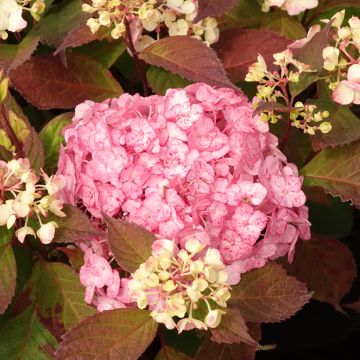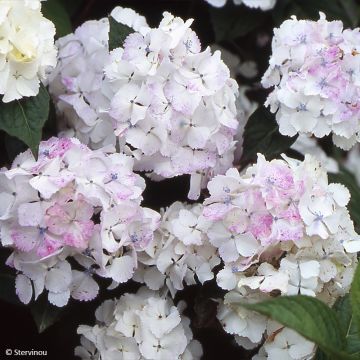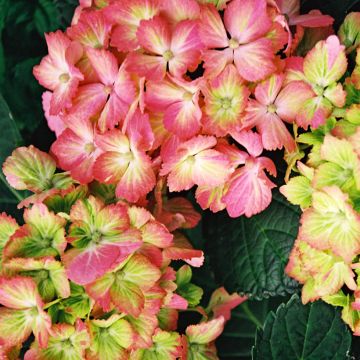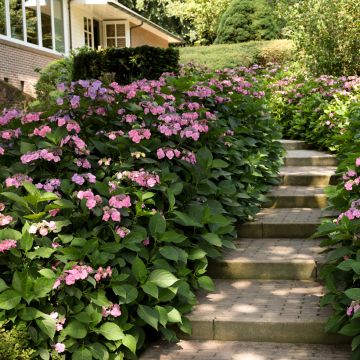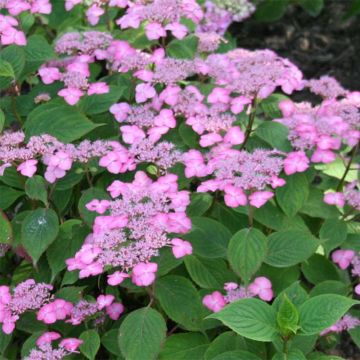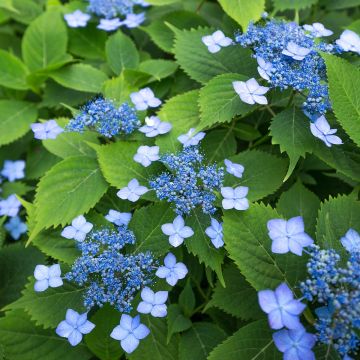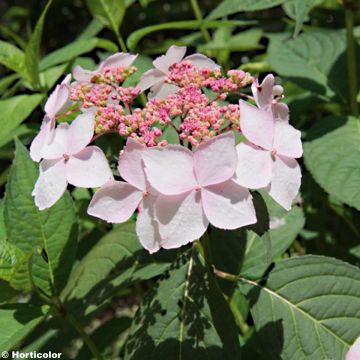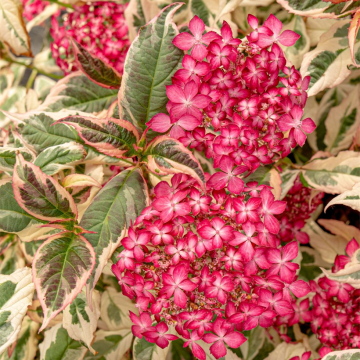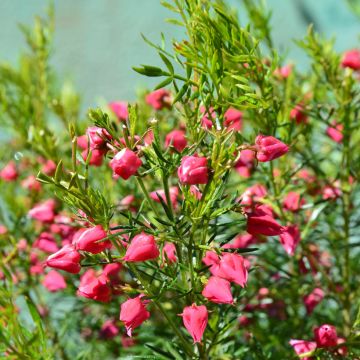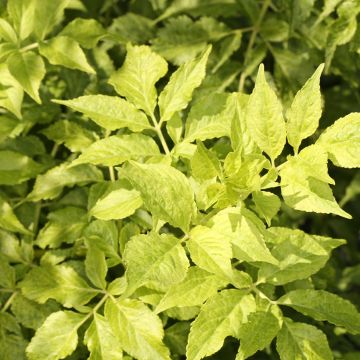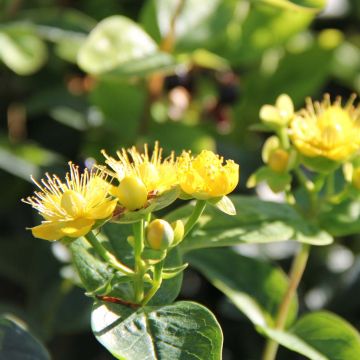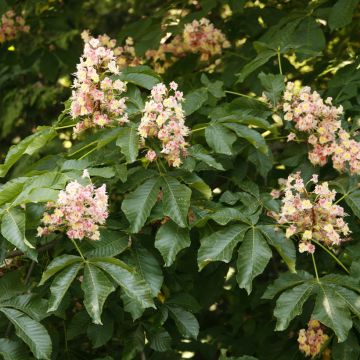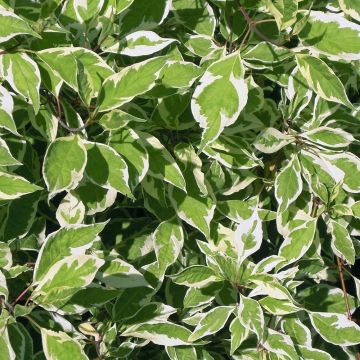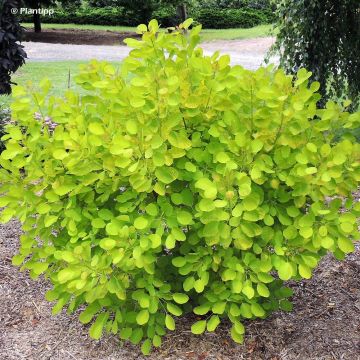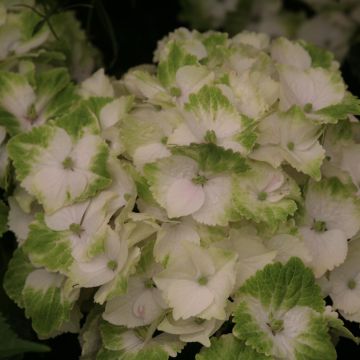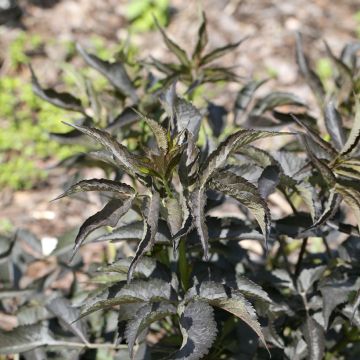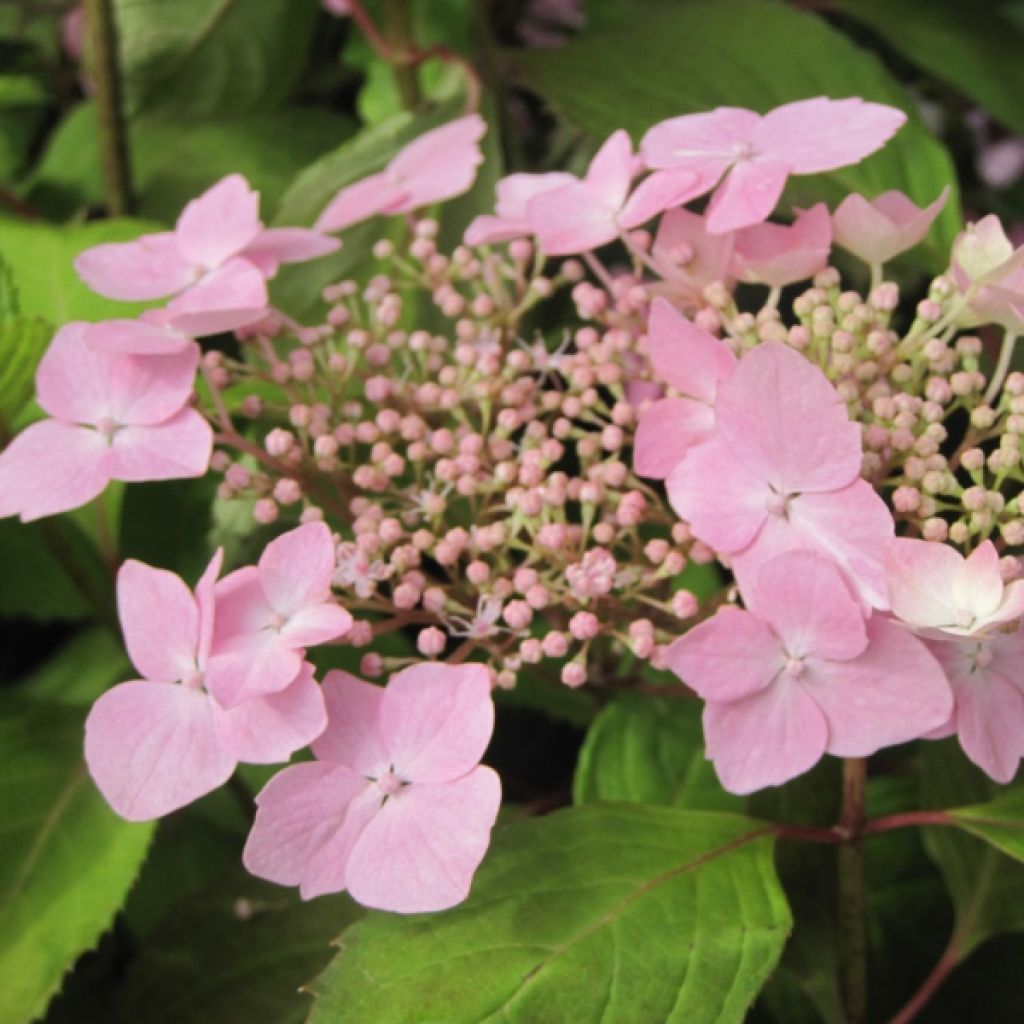

Hydrangea serrata Graciosa - Mountain Hydrangea
Hydrangea serrata Graciosa - Mountain Hydrangea
Hydrangea serrata Graciosa
Mountain Hydrangea, Tea of Heaven
Not much flowering this year, but the young plant is growing very well. It should be blooming nicely next year.
Christophe, 02/08/2022
This item cannot be shipped to the selected country
Delivery charge from €5.90
More information
Schedule delivery date,
and select date in basket
This plant carries a 24 months recovery warranty
More information
We guarantee the quality of our plants for a full growing cycle, and will replace at our expense any plant that fails to recover under normal climatic and planting conditions.
From €5.90 for pickup delivery and €6.90 for home delivery
Express home delivery from €8.90.

Does this plant fit my garden?
Set up your Plantfit profile →
Description
Hydrangea serrata 'Graciosa' is a variety of hydrangea with flat heads of high ornamental value. It displays abundant and early flowering that changes colour through the season and beautiful autumn colours. Depending on the nature of the soil, its lace-cap inflorescences are initially tinged with tender pink or pale mauve blue before gradually turn to purplish pink or violet. With moderate development, wider than tall, this bush is suitable for gardens of all sizes and adapts to container cultivation. A kaleidoscope of colours!
Awarded at the Courson plant days in spring 1999, Hydrangea serrata 'Graciosa' is a small bush that measures about 1m (3ft) high with a spread of 1.2m (4ft) at maturity. Its shape is bushy and quite wide. Its foliage is composed of tapered leaves, veined with red on a coppery green background. In autumn, before falling, they turn orange, sometimes purple if the bush gets a little sun. The flowering begins around mid-June, depending on the climate, and continues until September, on the current year's wood. The flowers gather on a short stem, carried by mahogany-coloured peduncles. Small tightly packed fertile flowers with protruding stamens gather in the centre, surrounded by a crown of larger sterile flowers. The colour of the flowers varies depending on the nature of the soil and the presence of aluminium sulphate. They are born green, become cream, then gradually take on pink or bluish tones depending on the soil. At the end of the season, the faded flowers take on crimson tones.
Hydrangea serrata is native to the mountains from the Kuril Islands to Taiwan and from southern China to eastern Japan. It thrives in mountainous climates. Hardy up to -15°C (5°F), Hydrangea serrata 'Graciosa' will give its best in partial shade or morning sun. It is perfect for a shrub border, as a standalone, or in a large container. Consider hydrangeas for composing spectacular flowering hedges. Combine them with other plants from non-limestone humiferous soil: pieris, azaleas, camellias, rhododendrons, and hardy fuchsias. Paulownia tomentosa is an ideal companion as its turgid roots feed those of other bushes planted in the understorey.
Report an error about the product description
Hydrangea serrata Graciosa - Mountain Hydrangea in pictures
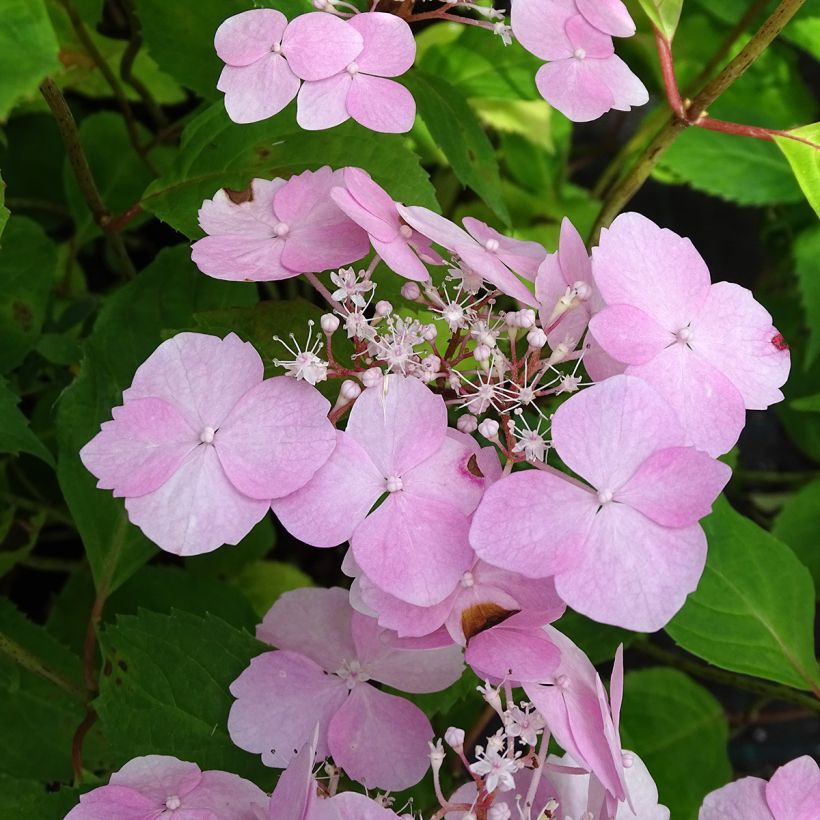

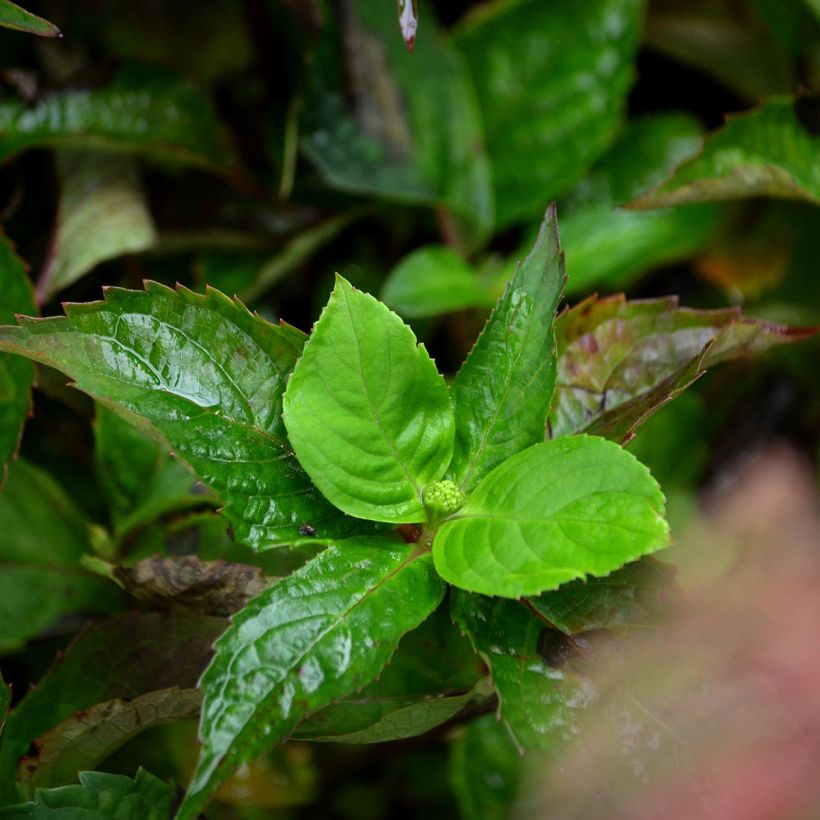

Plant habit
Flowering
Foliage
Botanical data
Hydrangea
serrata
Graciosa
Hydrangeaceae
Mountain Hydrangea, Tea of Heaven
Cultivar or hybrid
Other Hydrangea serrata
Planting and care
Choose neutral to acidic compost. Use a liquid fertiliser. Every three to four years, add a layer of well-decomposed manure mixed with leaves so as not to attract moles or promote armillaria (a fungus that destroys the stump). For good growth, mulch the base. Water little, but often, with non-limestone water. Beware of slugs from February, as they attack young buds. Avoid planting your hydrangea under a birch, hazel, or ash tree due to root competition that could hinder growth. Prune at the end of winter by removing completely dry stems. Prune the oldest stems at mid-height above the young shoots.
Planting period
Intended location
Care
-
, onOrder confirmed
Reply from on Promesse de fleurs
Summer-flowering shrubs
Haven't found what you were looking for?
Hardiness is the lowest winter temperature a plant can endure without suffering serious damage or even dying. However, hardiness is affected by location (a sheltered area, such as a patio), protection (winter cover) and soil type (hardiness is improved by well-drained soil).

Photo Sharing Terms & Conditions
In order to encourage gardeners to interact and share their experiences, Promesse de fleurs offers various media enabling content to be uploaded onto its Site - in particular via the ‘Photo sharing’ module.
The User agrees to refrain from:
- Posting any content that is illegal, prejudicial, insulting, racist, inciteful to hatred, revisionist, contrary to public decency, that infringes on privacy or on the privacy rights of third parties, in particular the publicity rights of persons and goods, intellectual property rights, or the right to privacy.
- Submitting content on behalf of a third party;
- Impersonate the identity of a third party and/or publish any personal information about a third party;
In general, the User undertakes to refrain from any unethical behaviour.
All Content (in particular text, comments, files, images, photos, videos, creative works, etc.), which may be subject to property or intellectual property rights, image or other private rights, shall remain the property of the User, subject to the limited rights granted by the terms of the licence granted by Promesse de fleurs as stated below. Users are at liberty to publish or not to publish such Content on the Site, notably via the ‘Photo Sharing’ facility, and accept that this Content shall be made public and freely accessible, notably on the Internet.
Users further acknowledge, undertake to have ,and guarantee that they hold all necessary rights and permissions to publish such material on the Site, in particular with regard to the legislation in force pertaining to any privacy, property, intellectual property, image, or contractual rights, or rights of any other nature. By publishing such Content on the Site, Users acknowledge accepting full liability as publishers of the Content within the meaning of the law, and grant Promesse de fleurs, free of charge, an inclusive, worldwide licence for the said Content for the entire duration of its publication, including all reproduction, representation, up/downloading, displaying, performing, transmission, and storage rights.
Users also grant permission for their name to be linked to the Content and accept that this link may not always be made available.
By engaging in posting material, Users consent to their Content becoming automatically accessible on the Internet, in particular on other sites and/or blogs and/or web pages of the Promesse de fleurs site, including in particular social pages and the Promesse de fleurs catalogue.
Users may secure the removal of entrusted content free of charge by issuing a simple request via our contact form.
The flowering period indicated on our website applies to countries and regions located in USDA zone 8 (France, the United Kingdom, Ireland, the Netherlands, etc.)
It will vary according to where you live:
- In zones 9 to 10 (Italy, Spain, Greece, etc.), flowering will occur about 2 to 4 weeks earlier.
- In zones 6 to 7 (Germany, Poland, Slovenia, and lower mountainous regions), flowering will be delayed by 2 to 3 weeks.
- In zone 5 (Central Europe, Scandinavia), blooming will be delayed by 3 to 5 weeks.
In temperate climates, pruning of spring-flowering shrubs (forsythia, spireas, etc.) should be done just after flowering.
Pruning of summer-flowering shrubs (Indian Lilac, Perovskia, etc.) can be done in winter or spring.
In cold regions as well as with frost-sensitive plants, avoid pruning too early when severe frosts may still occur.
The planting period indicated on our website applies to countries and regions located in USDA zone 8 (France, United Kingdom, Ireland, Netherlands).
It will vary according to where you live:
- In Mediterranean zones (Marseille, Madrid, Milan, etc.), autumn and winter are the best planting periods.
- In continental zones (Strasbourg, Munich, Vienna, etc.), delay planting by 2 to 3 weeks in spring and bring it forward by 2 to 4 weeks in autumn.
- In mountainous regions (the Alps, Pyrenees, Carpathians, etc.), it is best to plant in late spring (May-June) or late summer (August-September).
The harvesting period indicated on our website applies to countries and regions in USDA zone 8 (France, England, Ireland, the Netherlands).
In colder areas (Scandinavia, Poland, Austria...) fruit and vegetable harvests are likely to be delayed by 3-4 weeks.
In warmer areas (Italy, Spain, Greece, etc.), harvesting will probably take place earlier, depending on weather conditions.
The sowing periods indicated on our website apply to countries and regions within USDA Zone 8 (France, UK, Ireland, Netherlands).
In colder areas (Scandinavia, Poland, Austria...), delay any outdoor sowing by 3-4 weeks, or sow under glass.
In warmer climes (Italy, Spain, Greece, etc.), bring outdoor sowing forward by a few weeks.

































